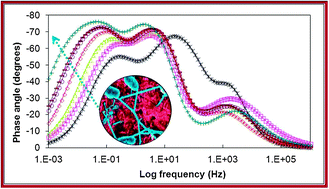The accurate use of impedance analysis for the study of microbial electrochemical systems
Abstract
The present critical review aims to portray the principles and theoretical foundations that have been used for the application of

* Corresponding authors
a
Separation and Conversion Technology, VITO – Flemish Institute for Technological Research, Boeretang 200, Mol 2400, Belgium
E-mail:
xoch@vito.be, xoch@xoch.info
b Department of Biochemical Engineering & Biotechnology, Indian Institute of Technology Delhi, Hauz Khas, New Delhi-110 016, India
The present critical review aims to portray the principles and theoretical foundations that have been used for the application of

 Please wait while we load your content...
Something went wrong. Try again?
Please wait while we load your content...
Something went wrong. Try again?
X. Dominguez-Benetton, S. Sevda, K. Vanbroekhoven and D. Pant, Chem. Soc. Rev., 2012, 41, 7228 DOI: 10.1039/C2CS35026B
To request permission to reproduce material from this article, please go to the Copyright Clearance Center request page.
If you are an author contributing to an RSC publication, you do not need to request permission provided correct acknowledgement is given.
If you are the author of this article, you do not need to request permission to reproduce figures and diagrams provided correct acknowledgement is given. If you want to reproduce the whole article in a third-party publication (excluding your thesis/dissertation for which permission is not required) please go to the Copyright Clearance Center request page.
Read more about how to correctly acknowledge RSC content.
 Fetching data from CrossRef.
Fetching data from CrossRef.
This may take some time to load.
Loading related content
